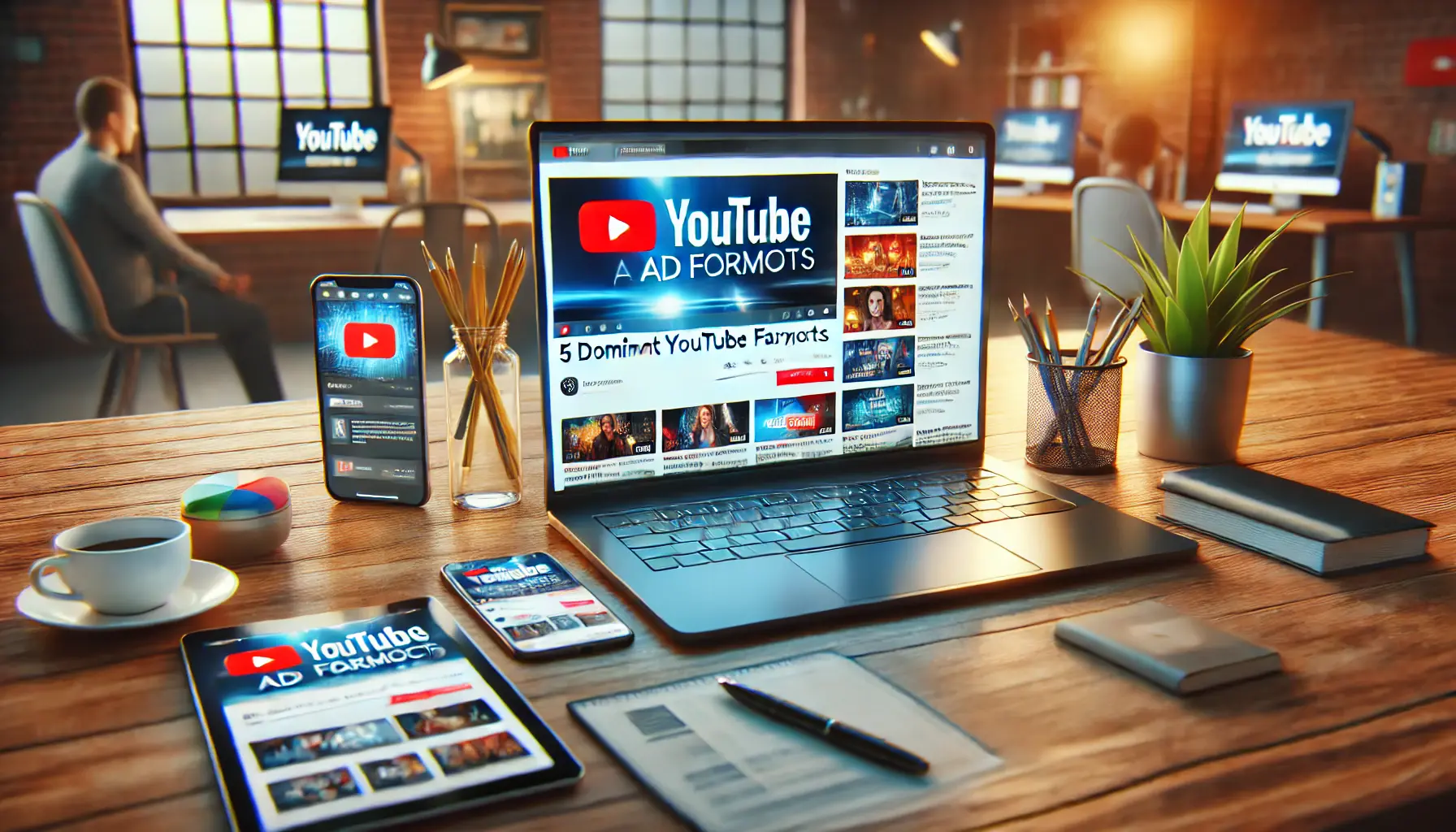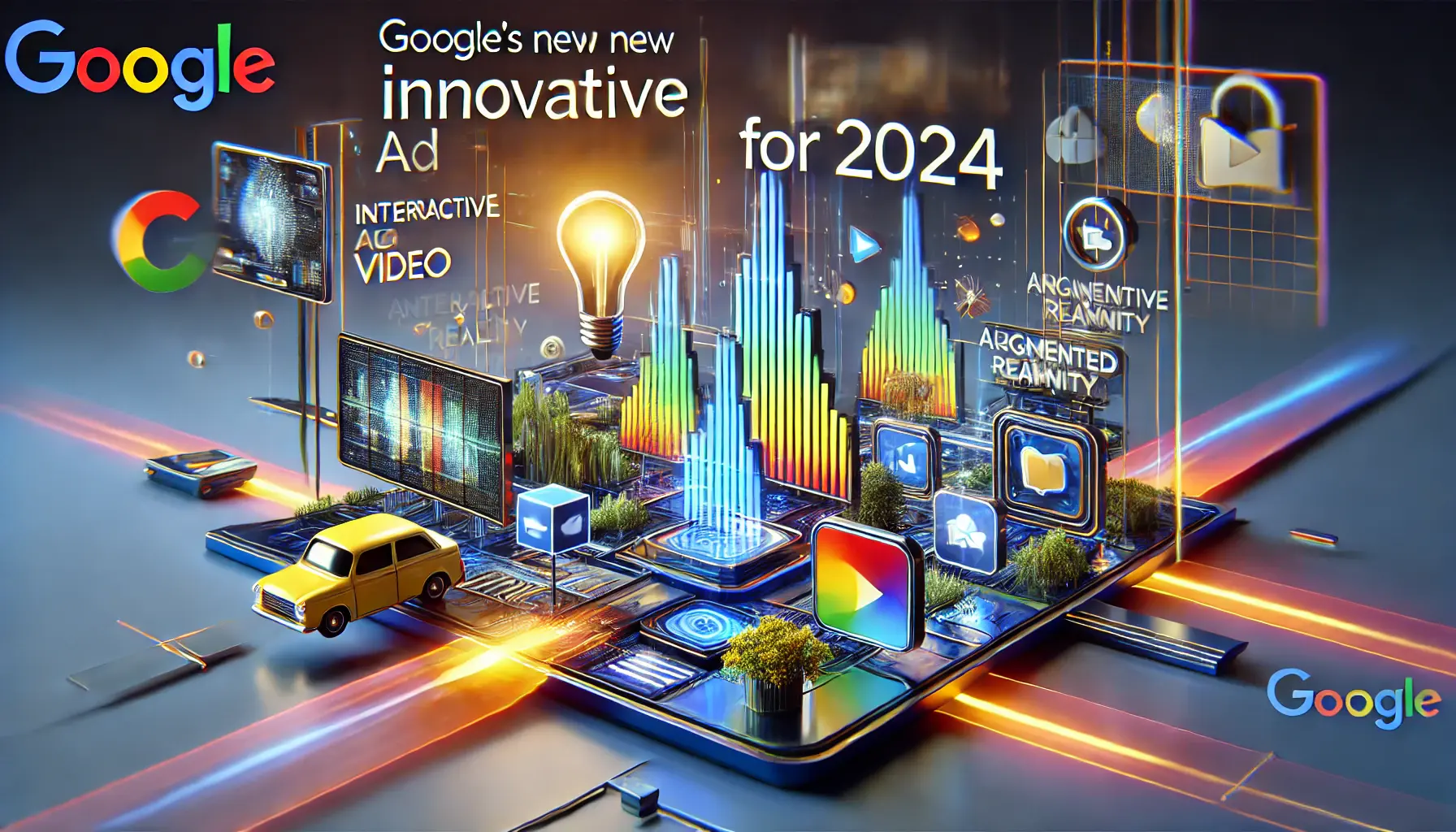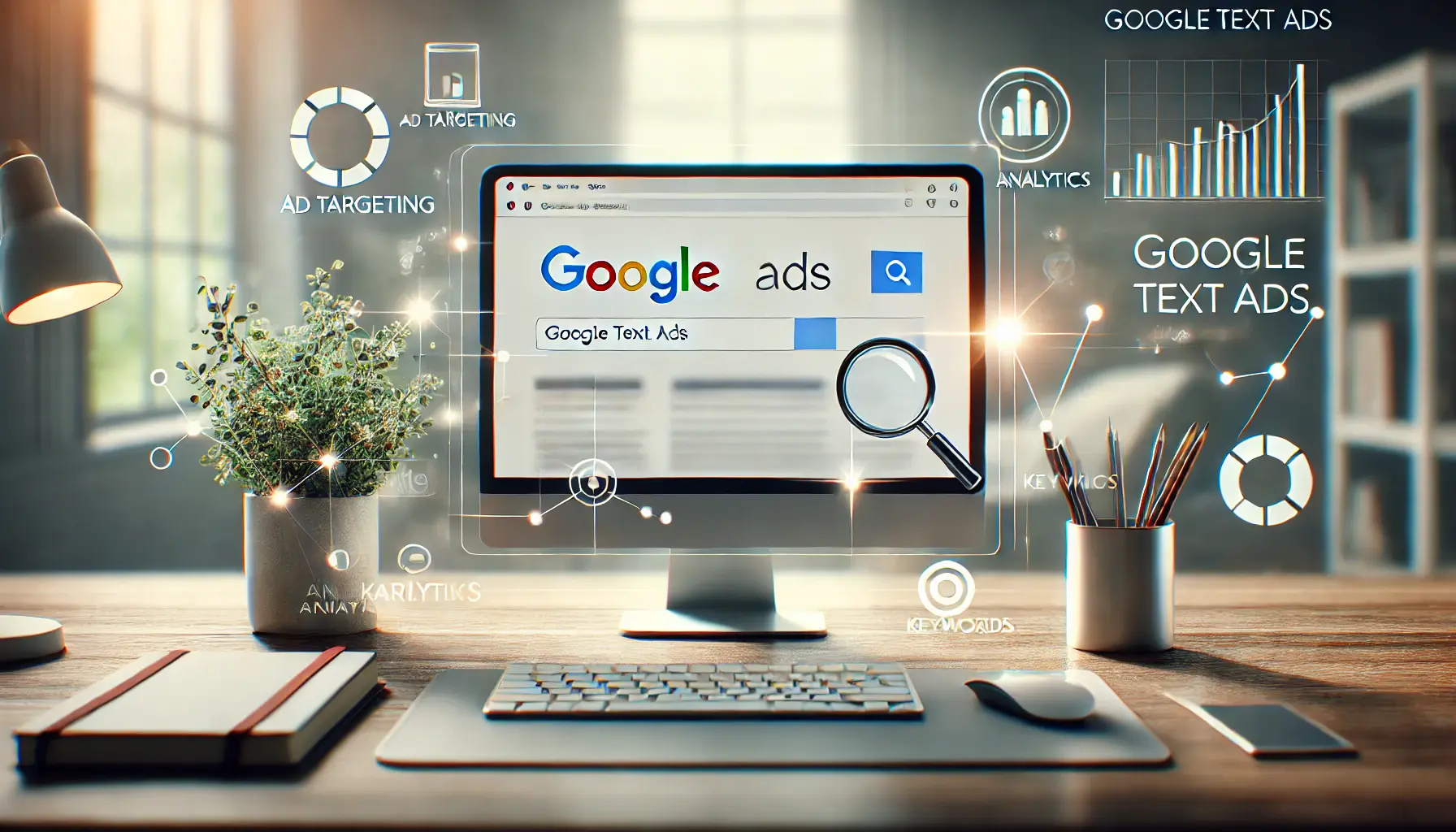YouTube has grown into a powerhouse of video content and advertisement in today’s digital world.
With billions of users, it offers unmatched potential to expose brands to a vast audience.
Knowing which YouTube ad formats to use—and how exactly to use them—can make a significant difference in your marketing campaign.
In this article, we’ll explore the five dominant YouTube ad formats that help bring audiences in, drive engagement, and allow for measurable results.
Each ad format on YouTube serves a unique purpose and targets different viewer behaviors, making it essential for marketers to understand the nuances of each type.
Let’s start by dissecting some of these powerful formats, beginning with TrueViewYouTube ad format allowing viewers to choose to watch or skip the ad after 5 seconds. Ads—the format that lets viewers stay in control of their experience.
- 1. TrueView Ads: Engage Viewers Through Choice
- What Are Non-Skippable Ads?
- 3. Bumper Ads: Deliver Quick, Impactful Messages
- 4. Masthead Ads: Squeeze the Most Out of Brand Exposure
- 5. Outstream Ads: The Extension Beyond YouTube
- Conclusion: Choosing the Best YouTube Ad Formats for Success
- Frequently Asked Questions About YouTube Ad Formats
1. TrueView Ads: Engage Viewers Through Choice
TrueView Ads are one of the most popular and versatile ad formats on YouTube—and for good reason.
These ads allow consumers to engage more meaningfully by giving them the option to either watch or skip, thereby capturing an interested audience.
TrueView Ads are skippable and only incur charges when users interact, making them ideal for brands looking to create a meaningful connection with viewers.
TrueView Ads are skippable video ads, offering viewers the choice to continue or skip after a few seconds.
This format aligns with viewer preferences by not forcing them to watch an ad in its entirety if they’re not interested.
The two main types of TrueView Ads are In-Stream AdsAds that play before, during, or after other videos on YouTube. and Discovery AdsYouTube ads that appear alongside related videos or in search results, helping users discover new content..
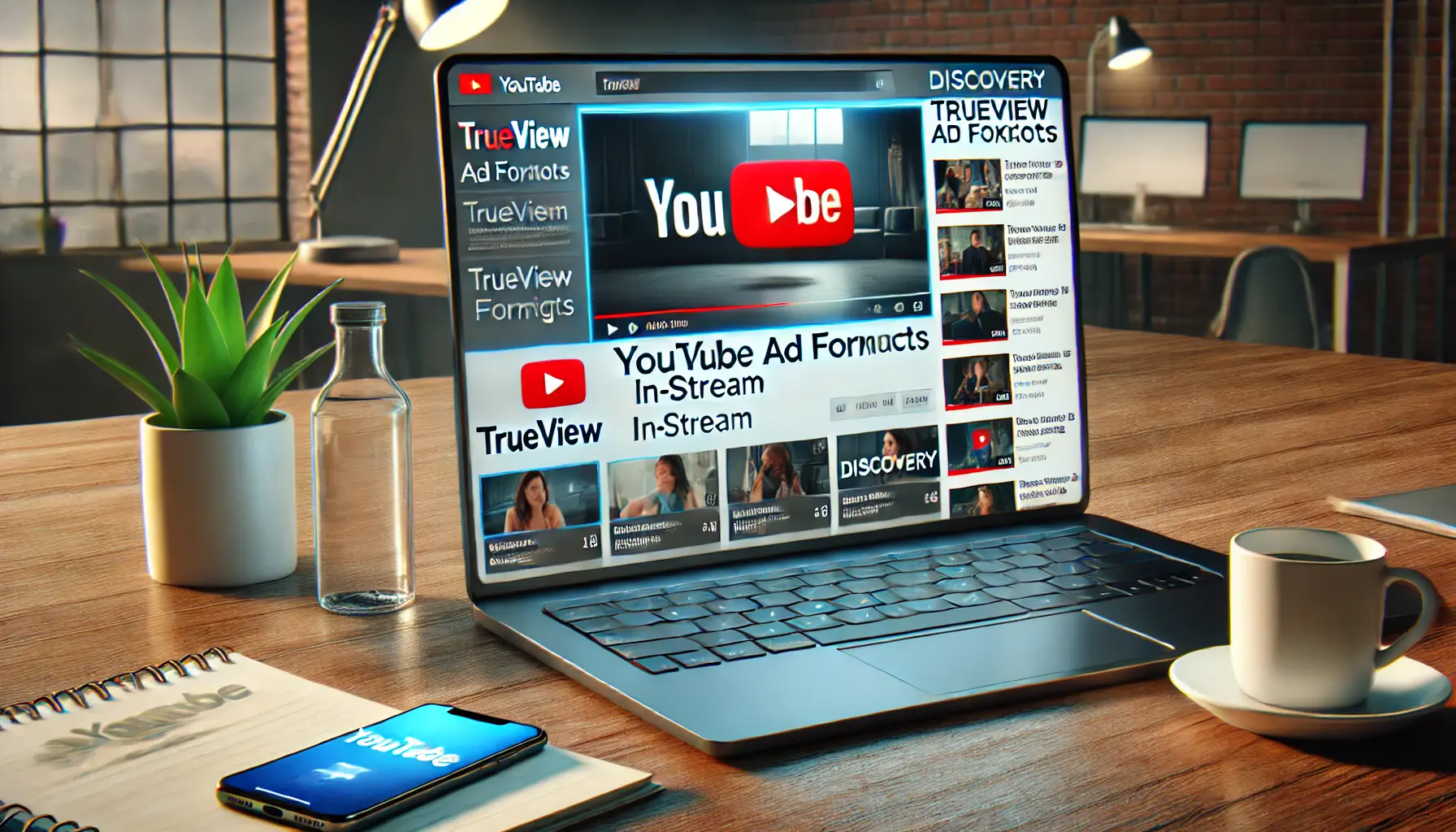
Illustration of YouTube’s TrueView In-Stream and Discovery Ad types on a digital workspace screen.
Types of TrueView Ads: In-Stream vs. Discovery
TrueView In-Stream Ads run before, during, or after YouTube videos and are skippable after the first 5 seconds.
Advertisers are charged only when viewers watch at least 30 seconds, engage, or watch the full ad if it’s shorter than 30 seconds.
TrueView Discovery Ads, on the other hand, appear in YouTube search results and alongside related videos.
They allow audiences to discover ads more organically and are perfect for generating interest and clicks from genuinely curious users.

Depiction of the engaging and flexible nature of YouTube’s TrueView Ads.
Why TrueView Ads Work So Well
TrueView Ads are highly effective because they give viewers control, a significant factor in driving online engagement.
When viewers choose to watch an ad, they are more likely to have a positive impression of the brand and remember the ad’s content.
Additionally, these ads are cost-effective, as you only pay when viewers engage, making them ideal for campaigns focused on maximizing reach and relevance.
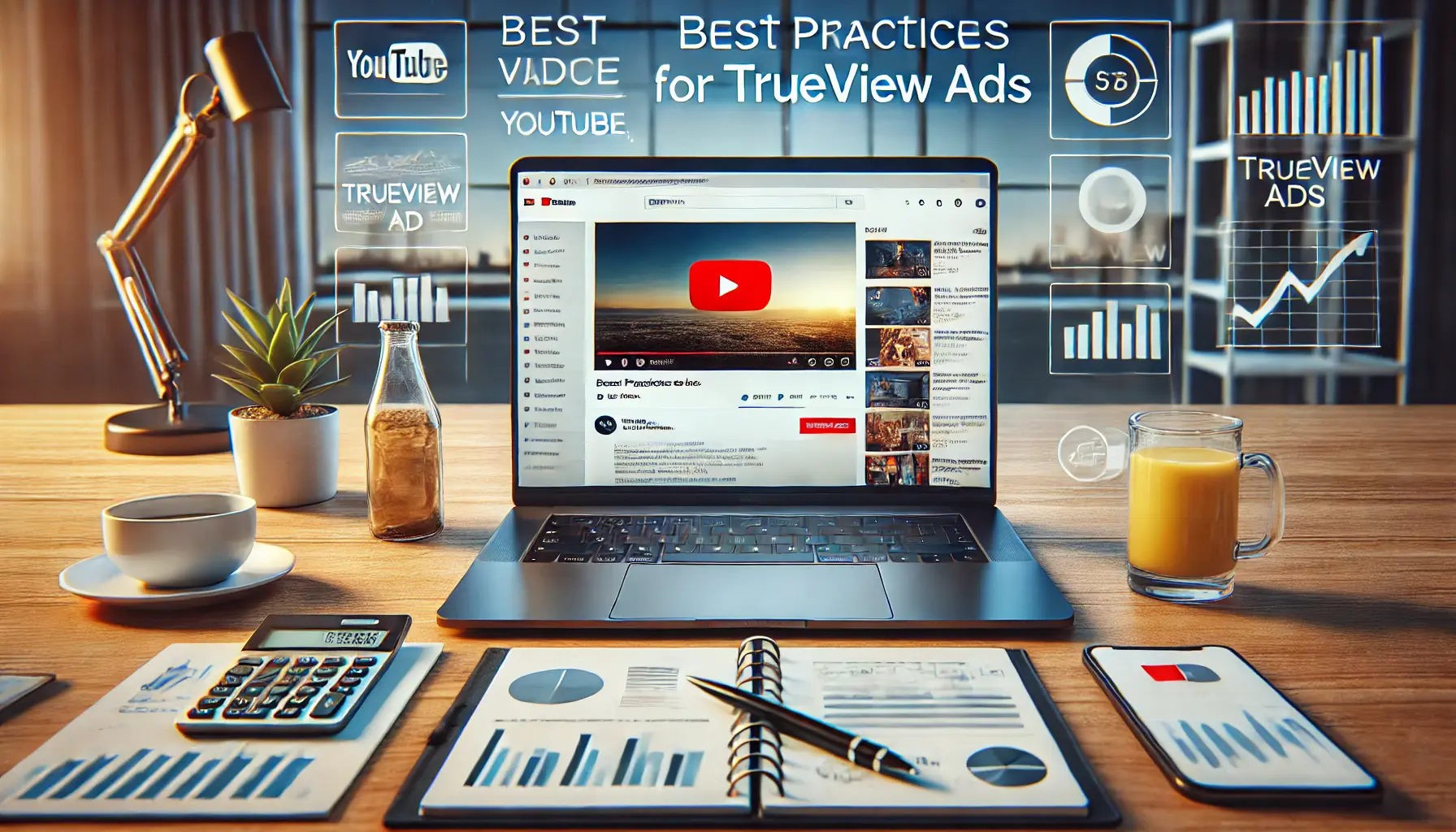
Illustration of a professional workspace applying best practices for TrueView Ads on YouTube.
Best Practices for TrueView Ads
To make the most of TrueView Ads, focus on creating content that captures attention within the first few seconds.
Here are a few best practices:
- Start with a strong hook: The first five seconds are crucial. Grab the viewer’s attention immediately to encourage continued watching.
- Keep it relevant: Ensure your ad aligns with the interests of your target audience.
- Include a clear call-to-action: Whether you want viewers to visit your website, subscribe, or watch more videos, make the next step clear.
- Optimize for mobile: Many YouTube users watch on mobile devices, so ensure your ads look great on smaller screens.
TrueView Ads provide a powerful way to engage viewers without intruding on their experience, making them an excellent choice for advertisers aiming to build brand affinity and drive results.
Next, we’ll dive into another impactful format: Non-Skippable Ads, which deliver concise, high-impact messages.
Non-skippable ads are a strong, short-format way of capturing viewer attention on YouTube.
Unlike their skippable counterparts, these ads must be watched in their entirety, ensuring that an advertiser’s message reaches viewers in full.
For brands with concise, impactful messaging, this ad format works effectively to build brand recall and encourage quick engagement.
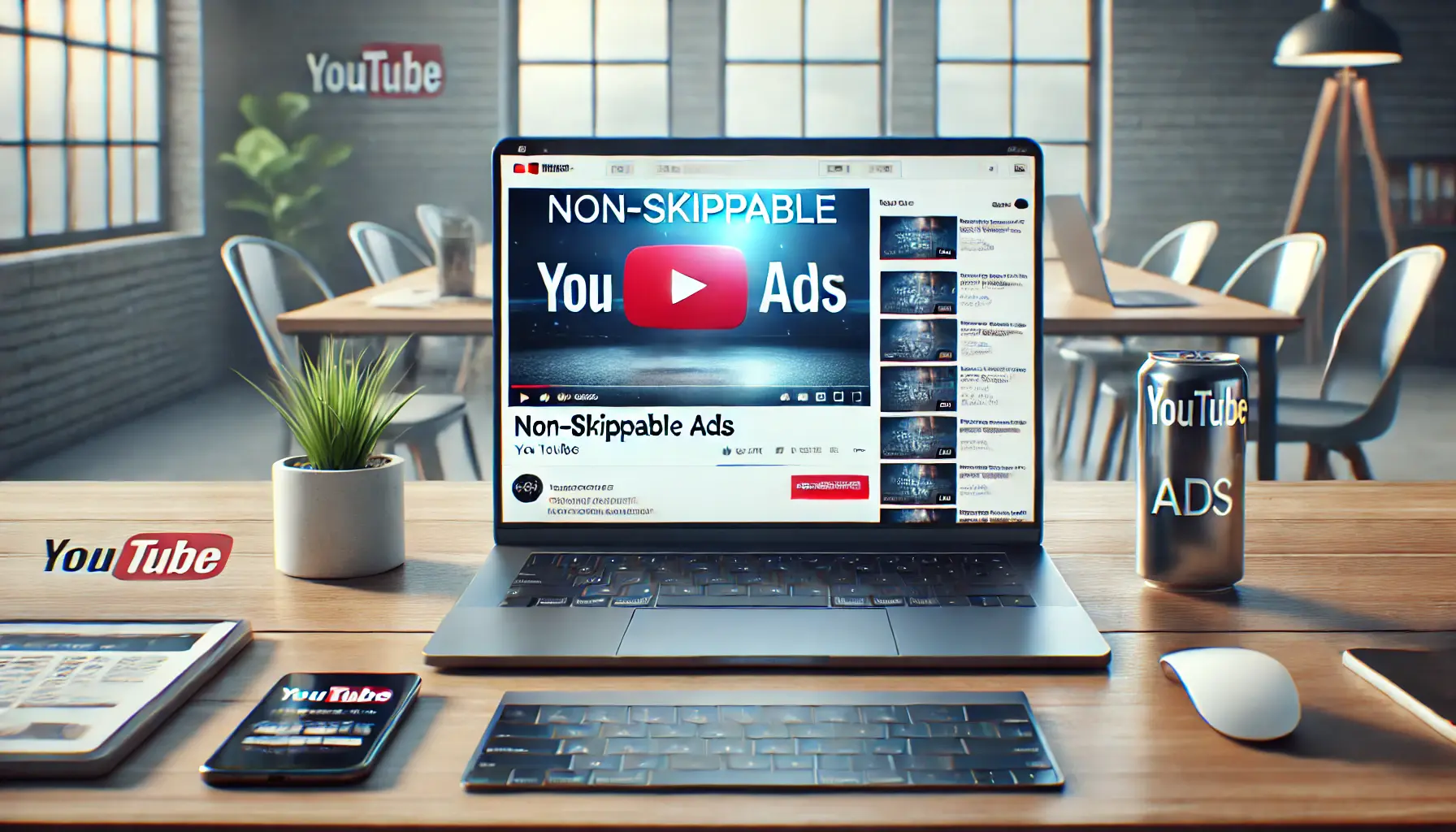
Depiction of YouTube’s Non-Skippable Ad format in a digital marketing setting.
What Are Non-Skippable Ads?
Non-skippable ads are short video ads that run before, during, or after the main video content.
They cannot be skipped and run for about 6 to 15 seconds in total, requiring viewers to watch them fully before proceeding to their desired content.
This format guarantees that the entire advertisement will be viewed, making it ideal for brief, impactful messages that require guaranteed exposure.
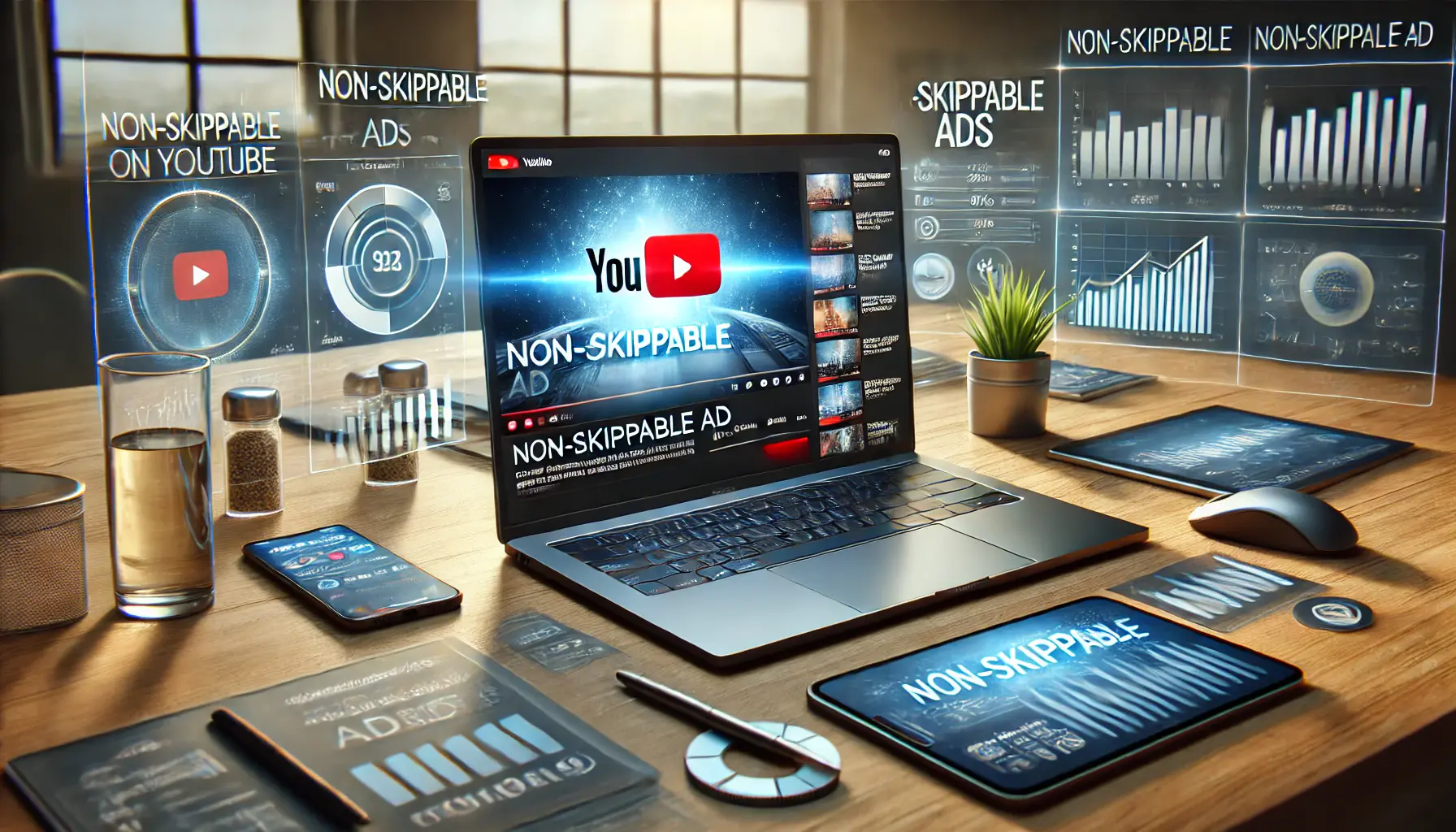
Illustration of the engagement and retention benefits of YouTube’s Non-Skippable Ads in a strategic marketing setup.
Benefits of Non-Skippable Ads
The primary benefit of a Non-Skippable Ad is that it provides 100% message retention.
This ad format allows advertisers to:
- Ensure complete message delivery: Every second of the ad is viewed, making it perfect for concise branding or product introductions.
- Improve brand recall: Non-Skippable Ads help create a strong, memorable impact on viewers.
- Target effectively: With precise targeting options, these ads reach the most relevant audiences.
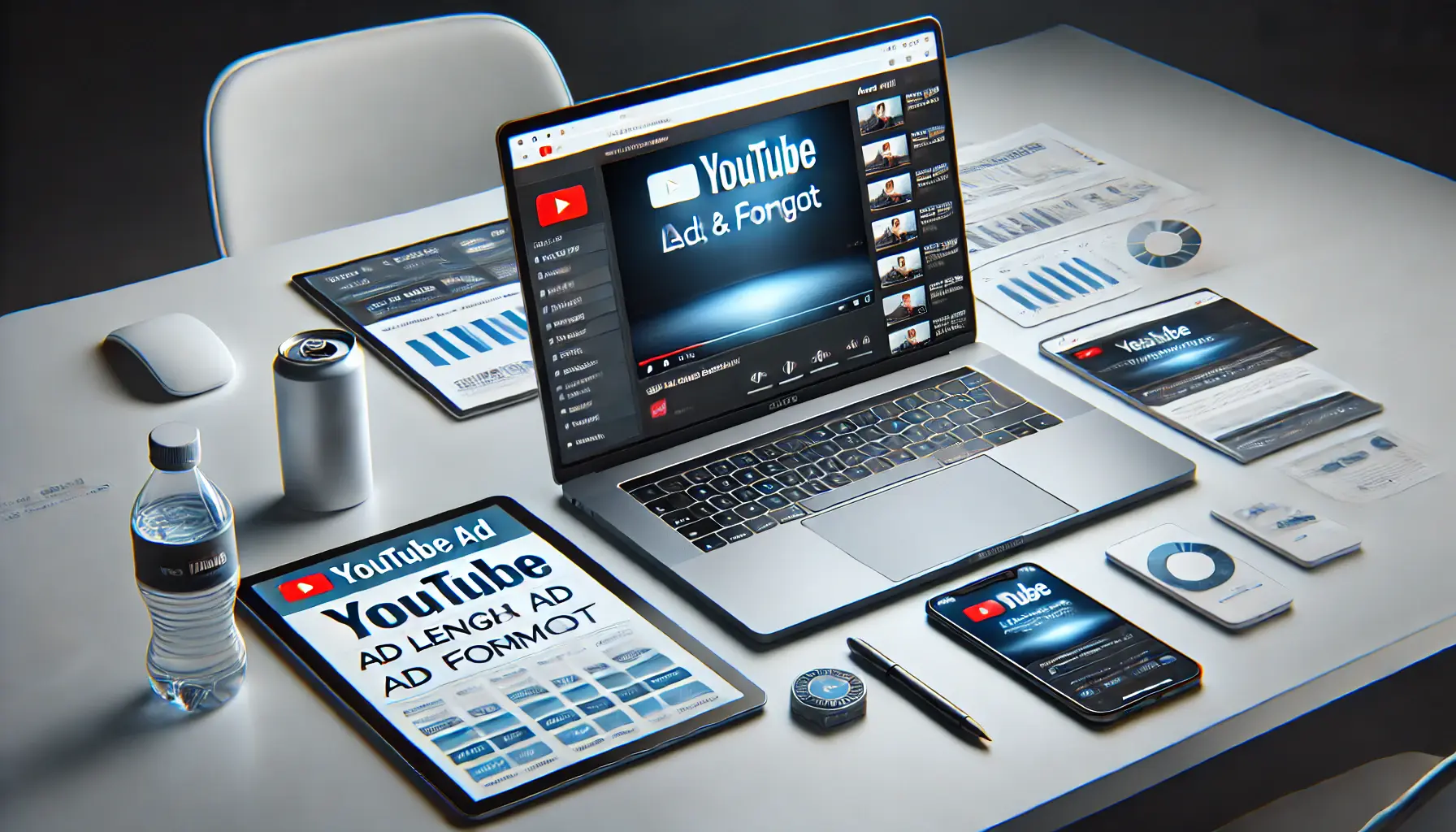
Illustration of YouTube ad length and format specifications in a professional digital marketing setup.
Length and Format Specifications
Non-Skippable Ads on YouTube usually range between 6 to 15 seconds, providing flexibility based on the advertiser’s goals.
In terms of technical requirements, they follow YouTube’s standard video ad specifications and must be optimized for both desktop and mobile viewing to reach the broadest audience.
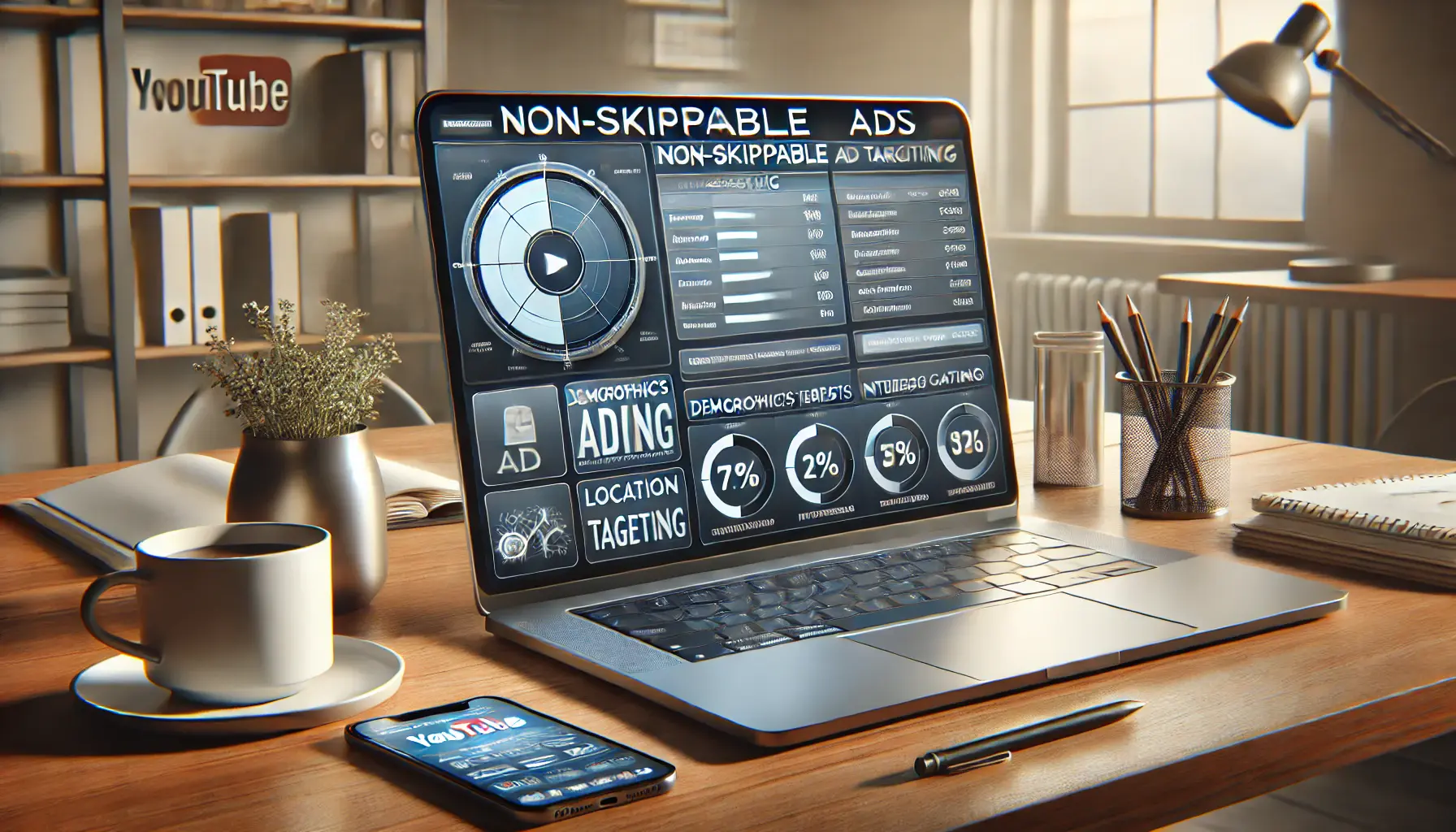
Illustration of targeting strategies for YouTube’s Non-Skippable Ads in a digital marketing environment.
Targeting Strategies for Non-Skippable Ads
To maximize the impact of Non-Skippable Ads, advertisers should use specific targeting strategies:
- Demographic targeting: Reach viewers based on age, gender, income, or other demographic factors.
- Content-based targeting: Target ads on videos related to specific topics or keywords, aligning with viewer interests.
- Location-based targeting: Focus on viewers within a specific geographic area for location-specific promotions.
- Remarketing: Re-engage users who have previously interacted with your brand to reinforce brand recognition.
Non-Skippable Ads are especially valuable when launching new products or running awareness campaigns that demand full viewer engagement.
With their short and catchy nature, they are also suitable for impactful storytelling within a limited time frame.
Next, we will review Bumper Ads—a six-second ad format designed to make a quick and lasting impression.
Non-skippable ads deliver the full message and are perfect for building brand recall.
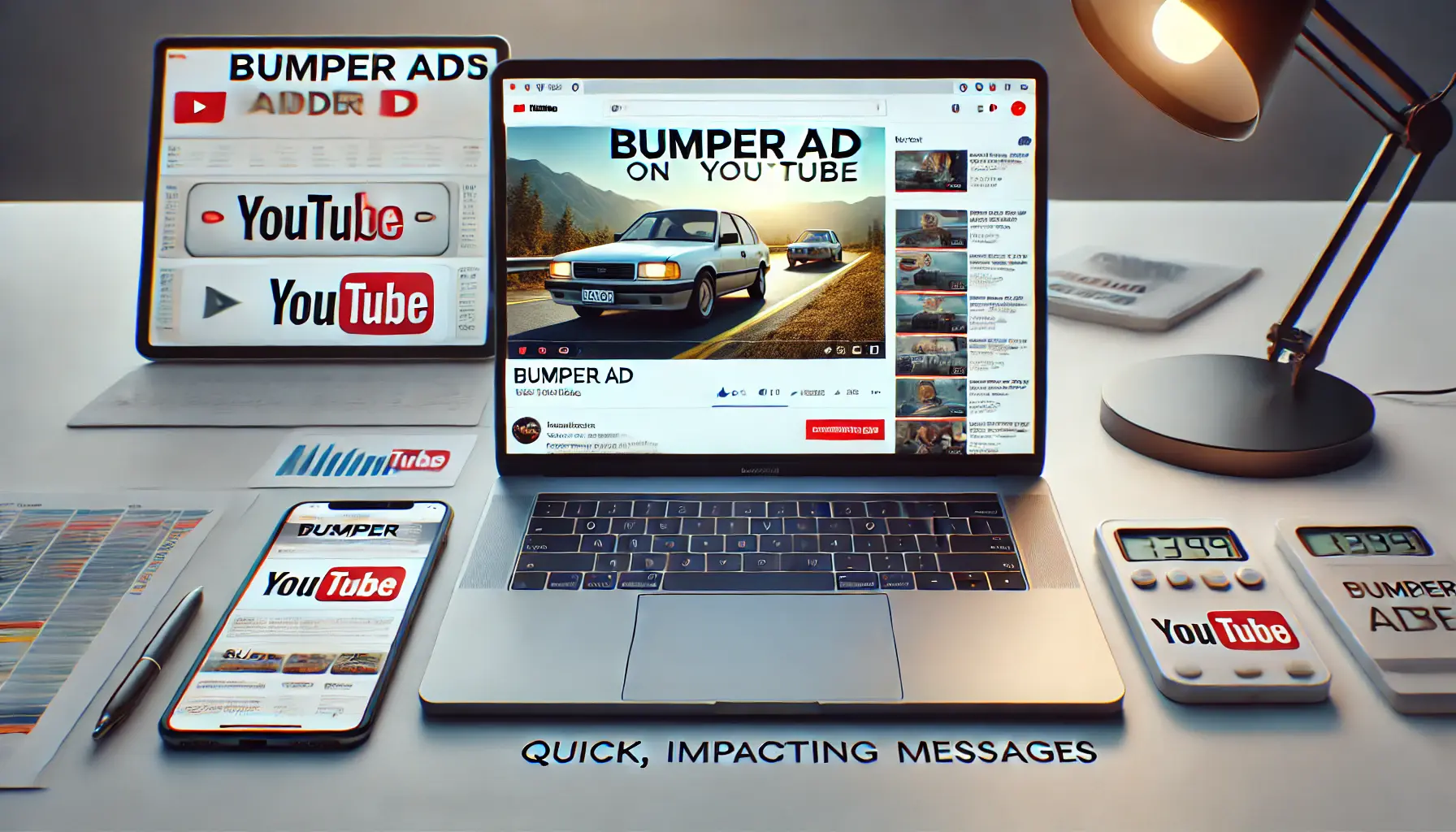
Illustration of YouTube’s bumper ads delivering quick, impactful messages in a professional marketing setting.
3. Bumper Ads: Deliver Quick, Impactful Messages
In today’s digital age, saying the pace is fast would be an understatement.
Bumper ads are six-second, non-skippable YouTube ad formats designed to deliver memorable messages.
These short ads run before, during, or after videos, ensuring viewers see the entire message uninterrupted.
Bumper ads allow brands to easily increase awareness and reinforce messaging in a subtle, non-intrusive manner.
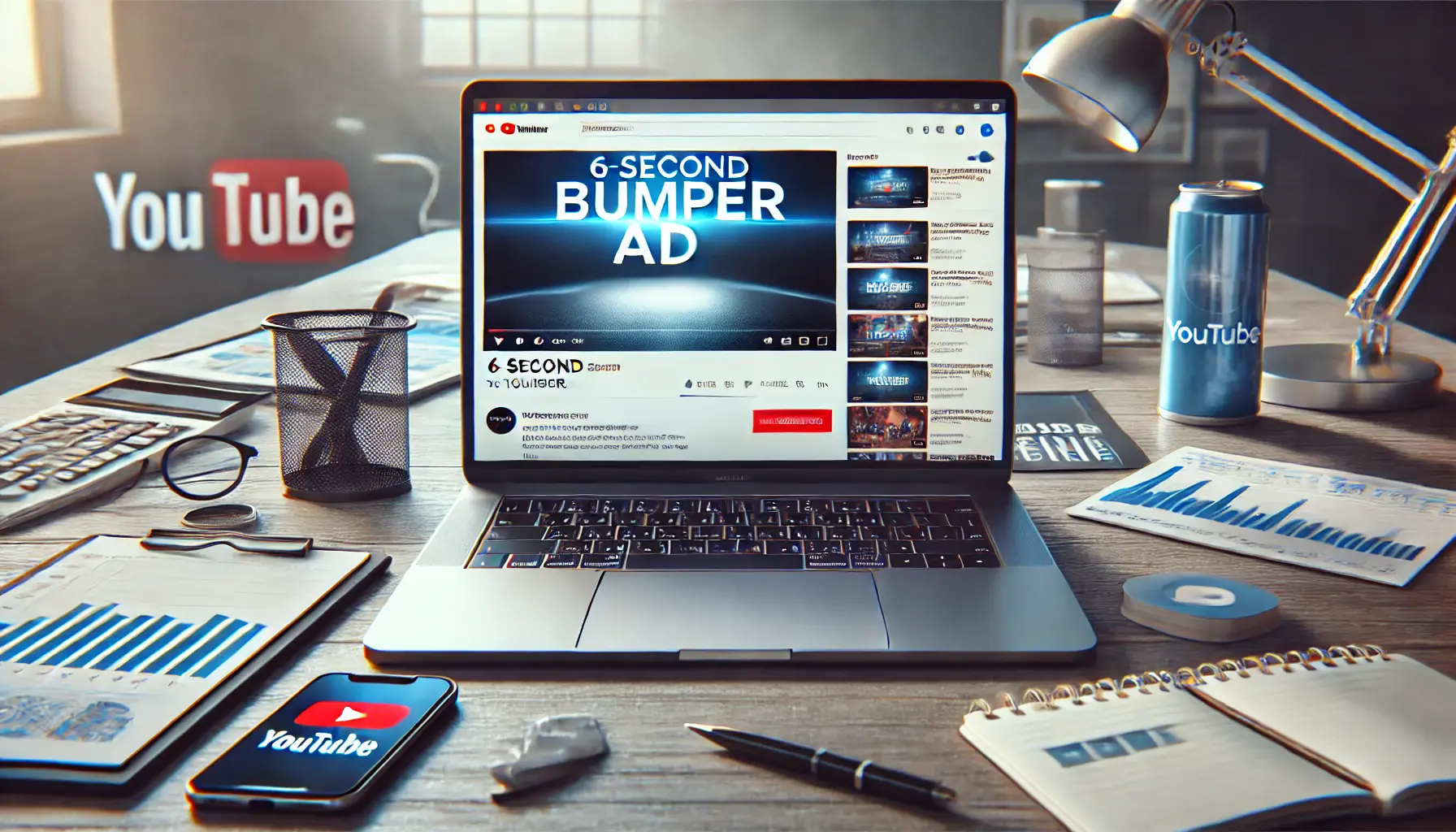
Illustration of a YouTube bumper ad delivering a quick, impactful message in a professional marketing environment.
What Are Bumper Ads?
Bumper ads are brief, un-skippable video ads available on YouTube for a maximum duration of six seconds.
They appear before, during, or after another video, guaranteeing that viewers see the whole advertisement.
Due to their short length, bumper ads are perfect for delivering quick, impactful messages that stick in viewers’ minds.
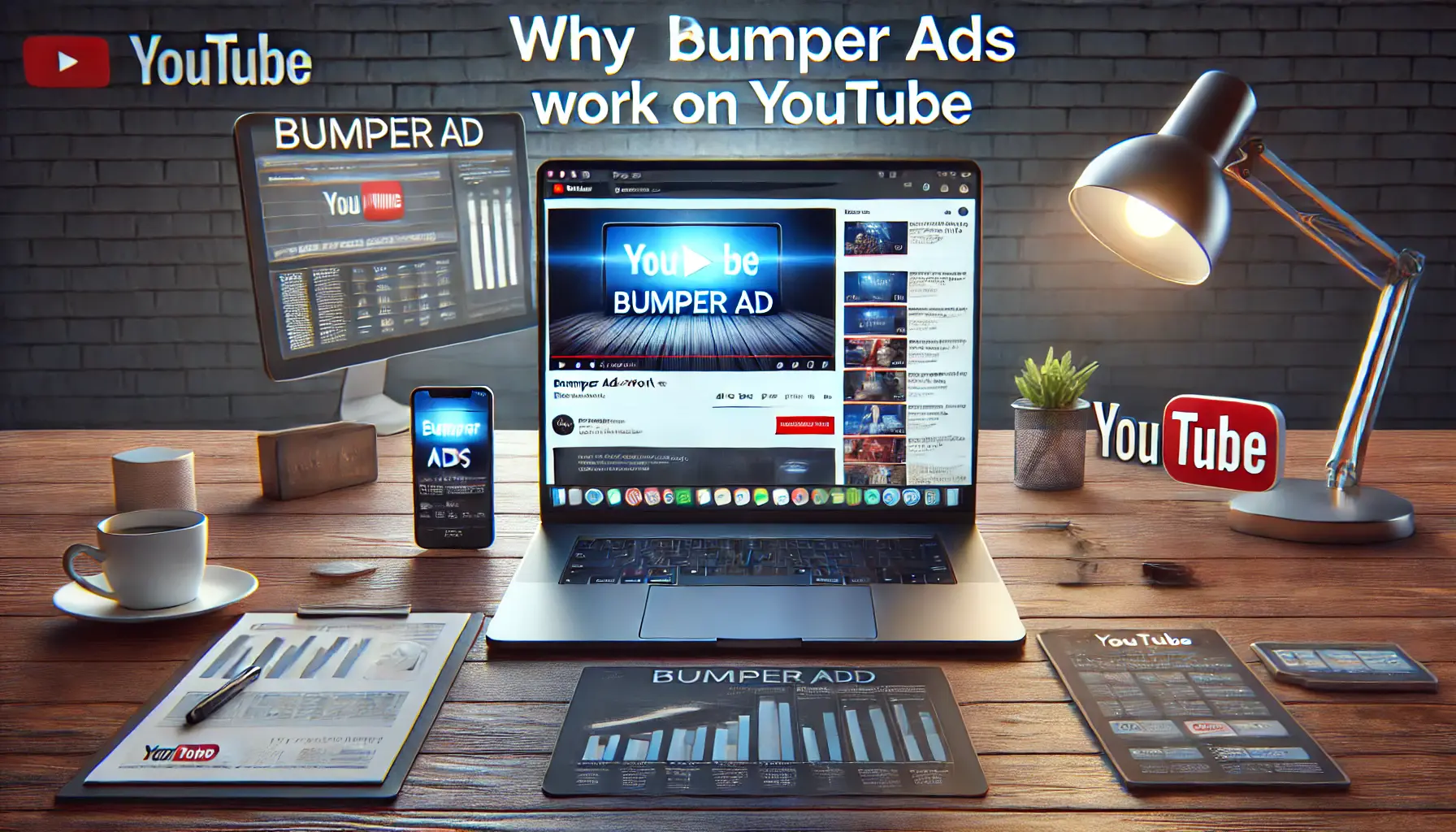
Illustration of the effectiveness of YouTube bumper ads in capturing viewer attention in a professional digital marketing setting.
Why Bumper Ads Work
The effectiveness of bumper ads lies in their brevity and non-skippable nature.
Their short length targets the decreasing attention spans of online audiences, making them more memorable.
Additionally, the non-skippable format ensures your message is fully delivered.
Bumper ads are particularly effective for:
- Increasing brand awareness: Their concise nature allows brands to introduce or reinforce their identity instantly.
- Complementing broader campaigns: They make excellent reminders or teasers for longer ad formats.
- Reaching mobile users: Short-format ads are ideal for mobile, where users often prefer quick content.
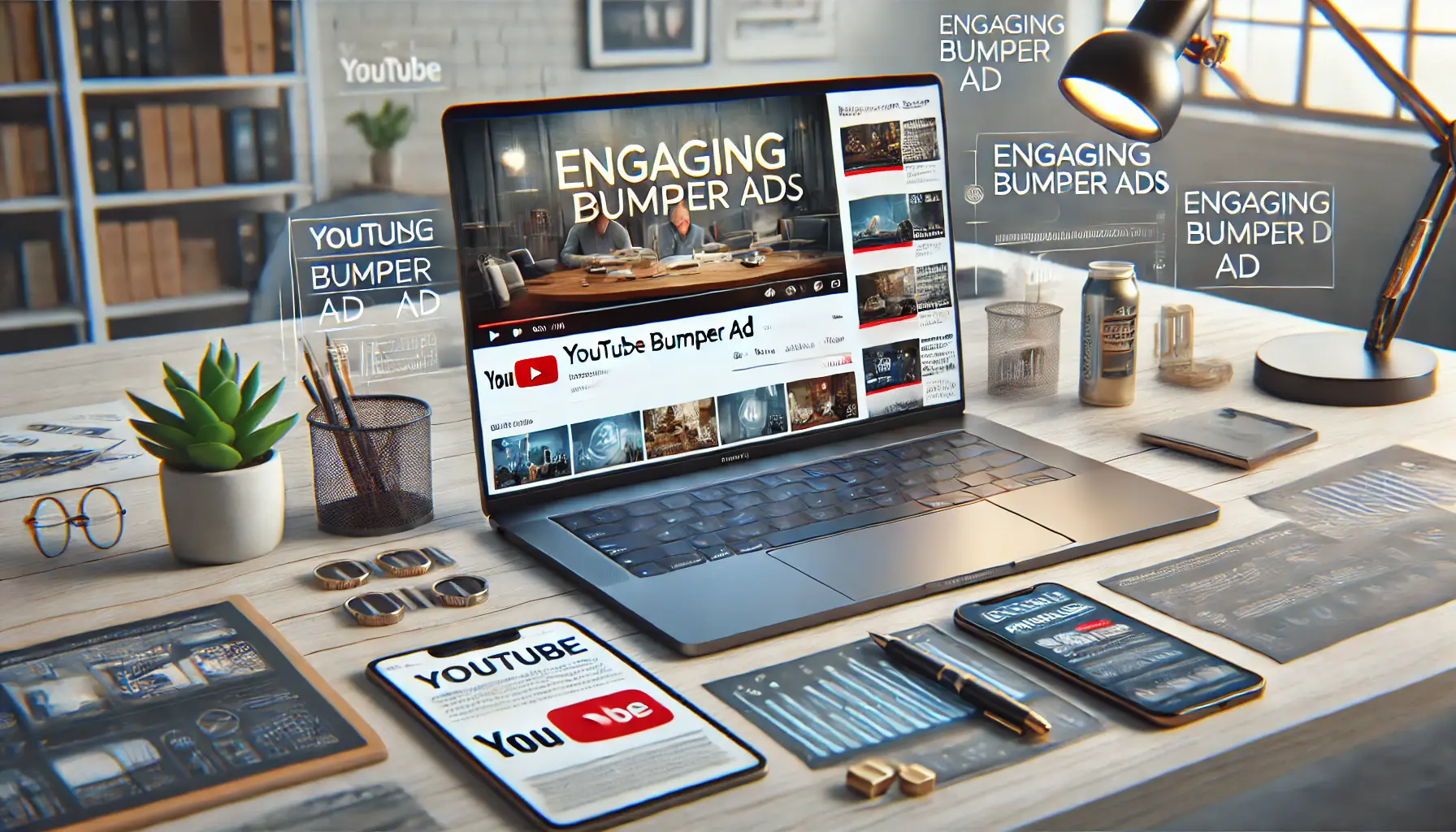
Illustration of best practices for creating engaging bumper ads in a professional digital marketing environment.
Best Practices to Ensure Engaging Bumper Ads
To get the most from bumper ads, follow these best practices:
- Focus on one message: With only six seconds, stick to one clear and compelling idea.
- Use strong visuals: Engaging imagery can quickly capture attention and often convey your message with minimal text.
- Include a call-to-action: Even in a short ad, guide viewers on the next step, such as visiting your website or learning more.
- Ensure consistency with branding: The ad should reflect your brand’s tone and style to reinforce recognition.
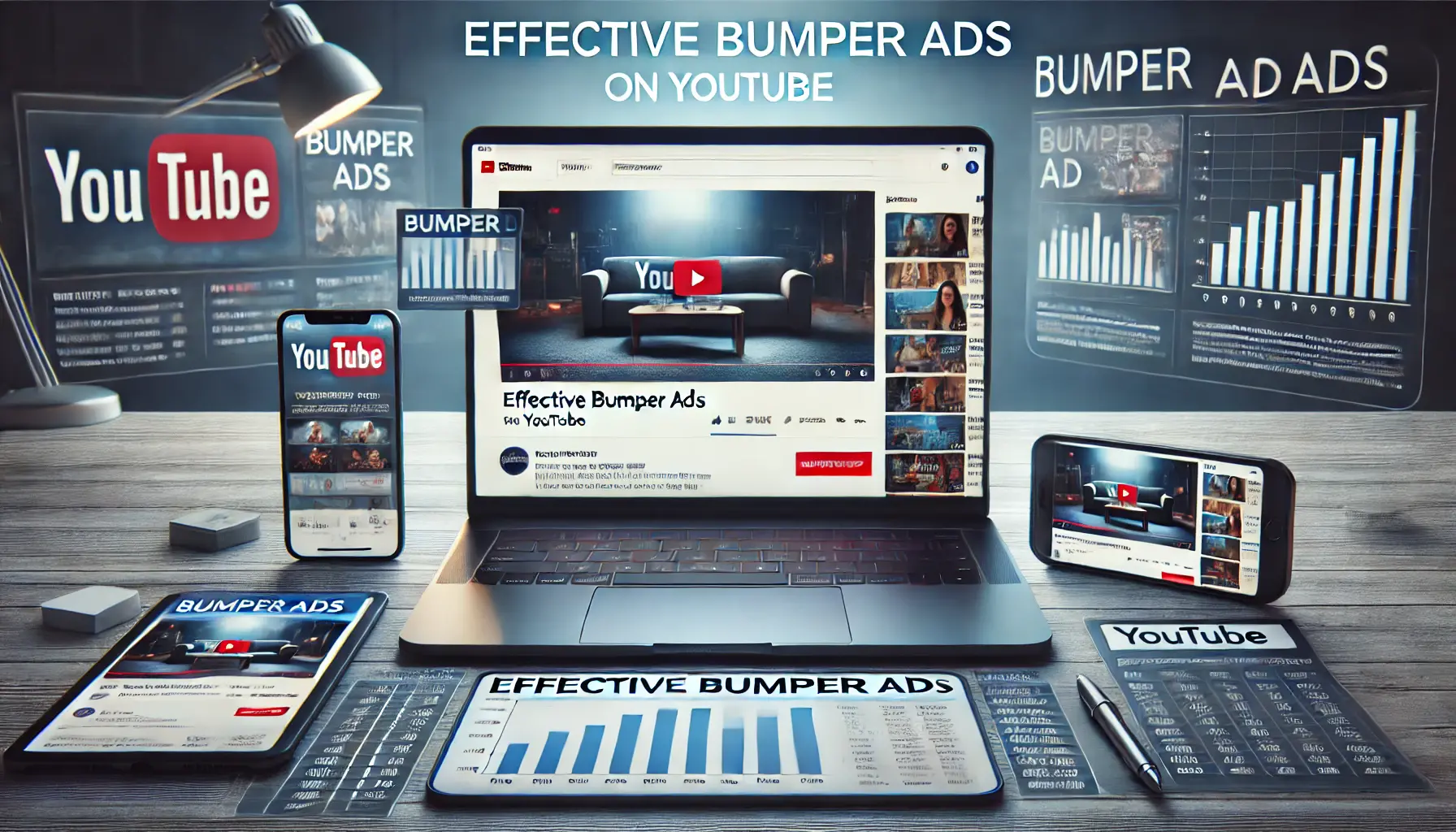
Illustration of effective bumper ads on YouTube in a professional marketing environment.
Examples of Effective Bumper Ads
Many brands have successfully used bumper ads to convey messages succinctly.
For instance, a leading beverage brand introduced a new product with refreshing visuals and an appealing tagline, leaving a memorable impression within six seconds.
Meanwhile, a top electronics company highlighted a key feature of its latest device using striking visuals and minimal text, giving viewers the core message in an instant.
Bumper ads allow for quick and impactful messaging that resonates with audiences.
Their short, non-skippable nature makes them highly relevant in any advertising strategy, particularly for raising brand awareness or supporting other campaigns.
Next, we’ll look into Masthead Ads, a highly visible format designed for maximum reach and brand exposure.
Bumper Ads are ideal for rapid branding in a six-second non-skippable format.
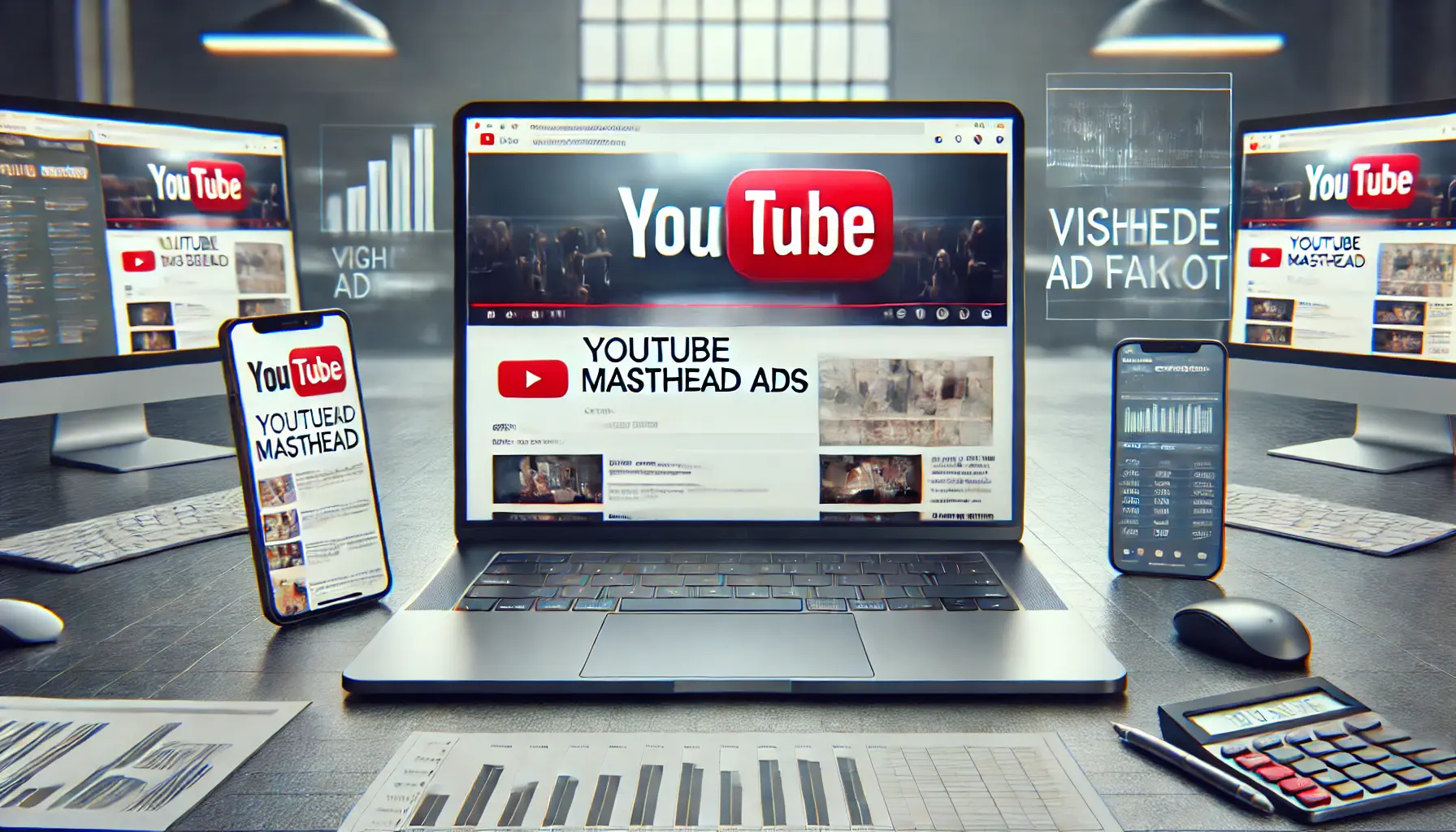
Illustration of YouTube Masthead Ads providing maximum brand exposure in a professional marketing environment.
4. Masthead Ads: Squeeze the Most Out of Brand Exposure
In digital marketing, securing prime positioning is essential.
Masthead ads, offered by YouTube, provide top placement by displaying the advertiser’s message prominently on the YouTube homepage, ensuring unmatched exposure to a vast audience.
This ad format is perfect for high-impact campaigns, major events, product launches, or any initiative requiring extensive reach.
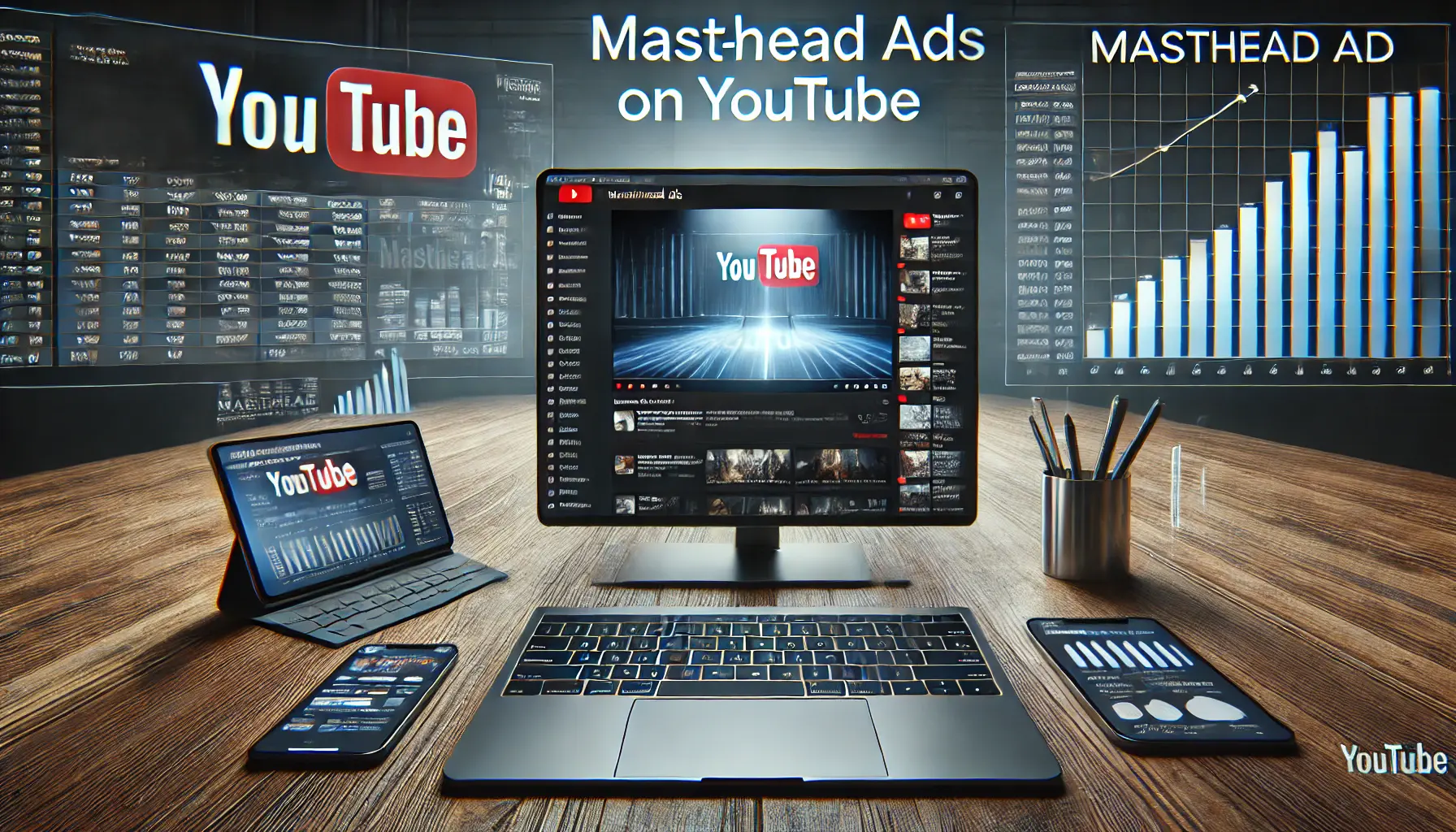
Illustration of YouTube’s Masthead Ads offering large-scale brand exposure in a professional marketing environment.
What Are Masthead Ads?
Masthead Ads are native, video-based advertisements that appear dominantly on YouTube’s homepage across all devices.
These ads play automatically without sound for up to 30 seconds and may include additional elements such as headlines, call-to-actionA prompt encouraging viewers to take a specific action, like visiting a website or subscribing. buttons, and companion banners.
This format guarantees high visibility, making it highly effective for driving mass awareness and engagement.
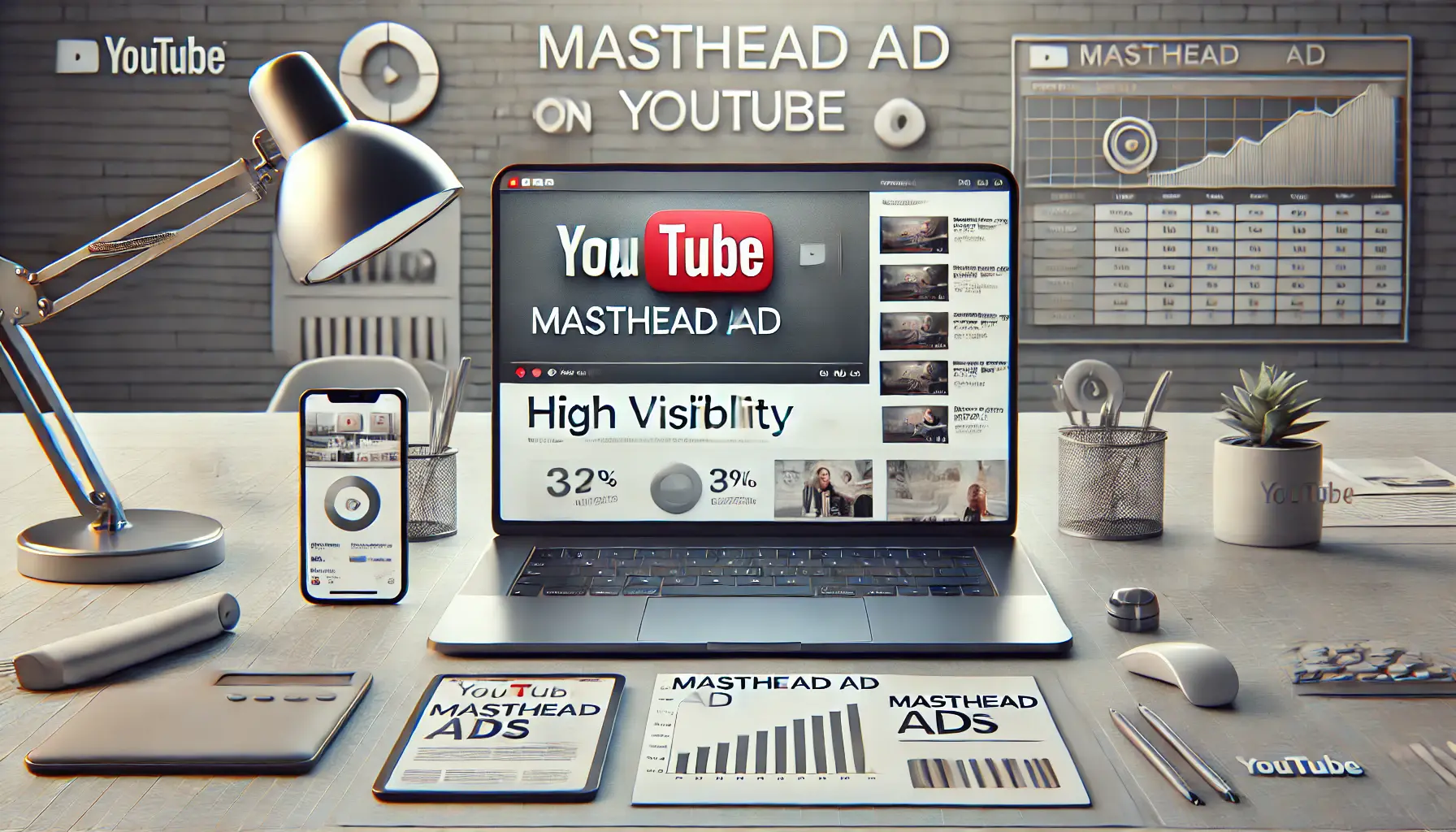
Illustration of the powerful benefits of Masthead Ads in a professional digital marketing environment.
Benefits of Masthead Ads
Using Masthead Ads offers several advantages:
- Unparalleled visibility: Positioned at the top of YouTube’s homepage, these ads capture the attention of millions of users.
- High engagement: The autoplay feature and prominent placement encourage user interest.
- Customizable elements: Advertisers can include videos, headlines, and call-to-action buttons to enhance the ad experience.
- Cross-device reach: Masthead Ads appear seamlessly on desktops, tablets, and mobile devices.

Illustration of the different types of Masthead Ads available on YouTube in a professional digital marketing environment.
Types of Masthead Ads
There are two primary types of Masthead Ads:
- Cost-Per-Impression (CPM) Masthead: Provides a reserved and fixed volume of impressions delivered throughout the campaign. This format is available globally through a Google representative or directly in Display and Video 360 (DV360) Instant Reserve or Google Ads Reservation.
- Cost-Per-Hour (CPH) Masthead: Provides 100% share-of-voice for eligible impressions during the reserved hours. This option is available only through a Google representative.
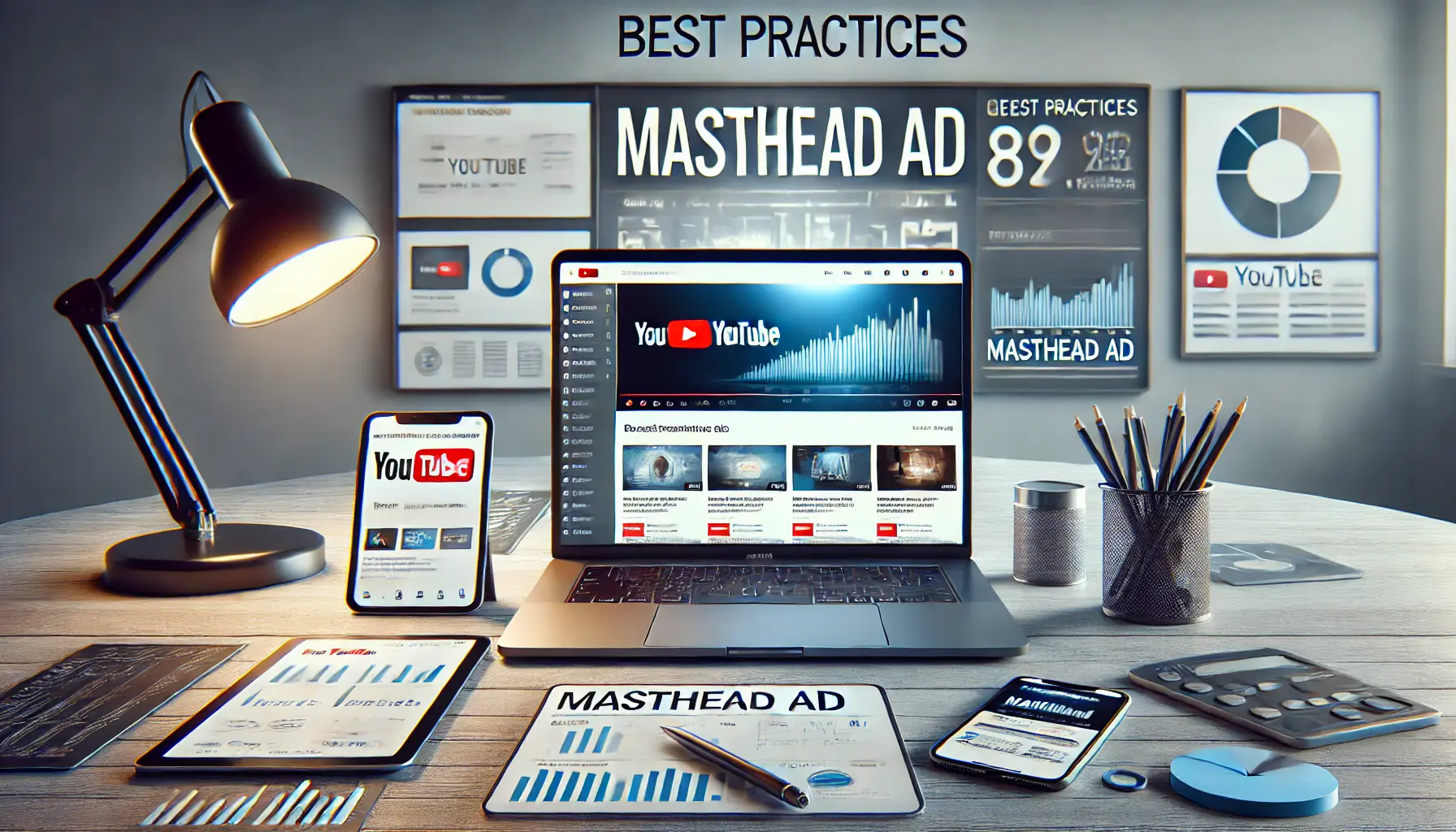
Illustration of best practices for using Masthead Ads effectively in a professional marketing environment.
Best Practices for Masthead Ads
To make the most of Masthead Ads, consider these best practices:
- Time with major events: Schedule Masthead Ads to coincide with significant events or product launches, when viewership is likely to be higher.
- Design compelling creative: Use high-quality videos and engaging headlines to capture user attention instantly.
- Add clear calls-to-action: Guide viewers on the next steps, such as visiting your website or exploring a product.
- Optimize for all devices: Ensure the ad displays correctly on desktop, tablet, and mobile for maximum reach.
By strategically using Masthead Ads, advertisers can effectively drive brand awareness and engagement.
Next, we’ll explore Overlay Ads, an ad format that offers a subtler yet effective way of reaching viewers.
Masthead ads are best for maximizing brand exposure with prominent YouTube homepage placement.
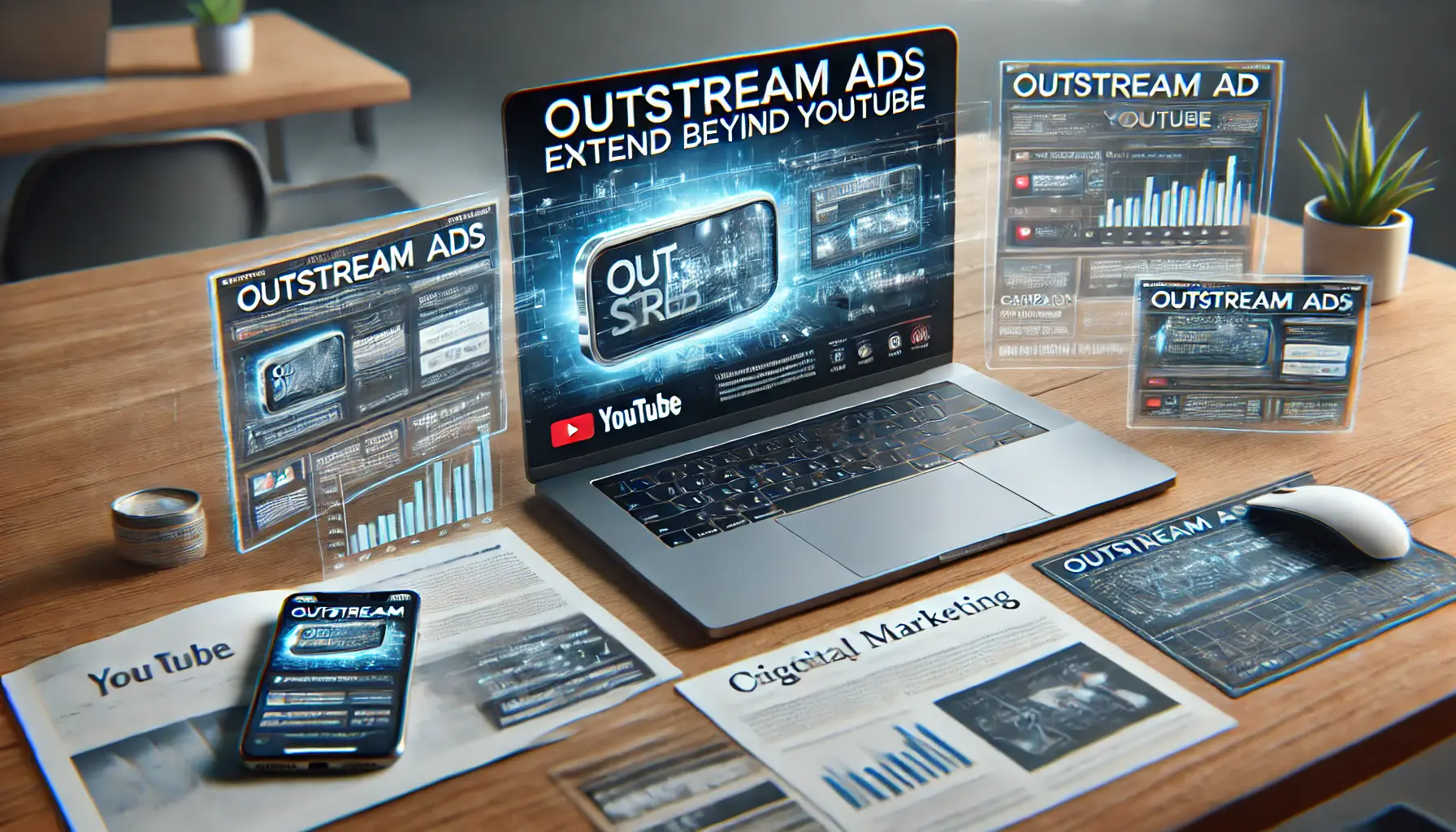
Illustration of Outstream Ads extending beyond YouTube, embedded in non-video content like news articles.
5. Outstream Ads: The Extension Beyond YouTube
In today’s digital advertising landscape, it’s essential to reach people outside traditional platforms.
Outstream ads offer a unique opportunity to engage viewers beyond YouTube, appearing within non-video content across different sites and apps.
This format enables advertisers to reach a wider audience, ensuring greater brand visibility and engagement.
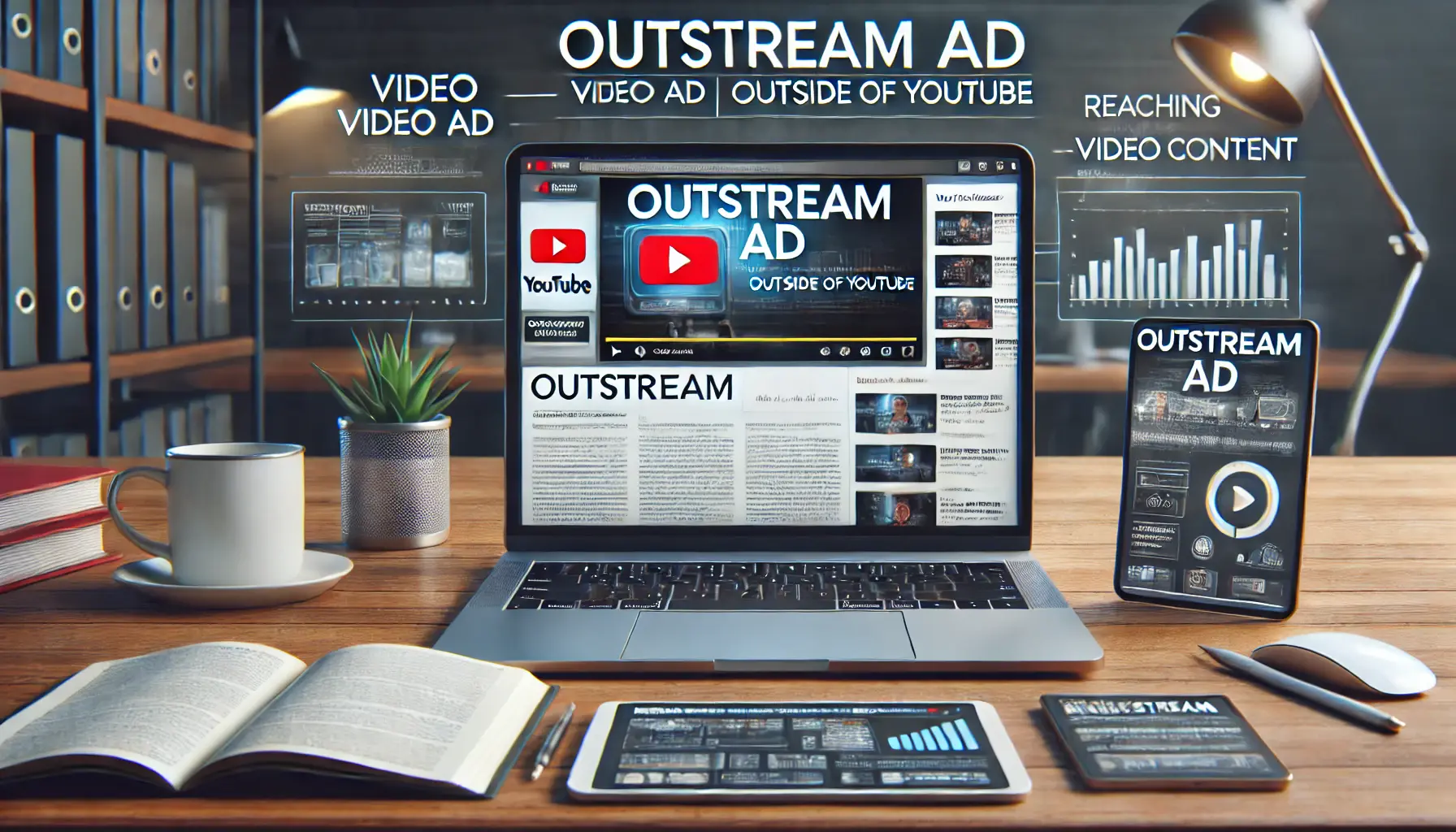
Illustration of an Outstream Ad embedded within text-based content, extending beyond YouTube.
What is an Outstream Ad?
Outstream ad formats refer to video ads that appear outside the traditional video player, typically within text-based content formats, such as news articles or blogs.
They automatically play when the ad is in view and pause when out of view, ensuring a non-intrusive user experience.
Unlike instream ads, which appear before, during, or after video content, outstream ads are designed specifically to reach users who are not actively engaging with video platforms.

Illustration of the benefits of Outstream Ads in a professional digital marketing environment.
Benefits of Outstream Ads
Using outstream ads offers several benefits:
- Wider reach: Engage audiences across a wide range of websites and apps, extending beyond video-centric platforms.
- Cost-effective: Typically more affordable than traditional video ads, making them suitable for various marketing budgets.
- Increased user engagement: Seamlessly integrated into content, which often leads to higher viewability and interaction rates.
- Flexible placement: Can be positioned within articles, feeds, or as interstitials, providing versatility in ad strategy.
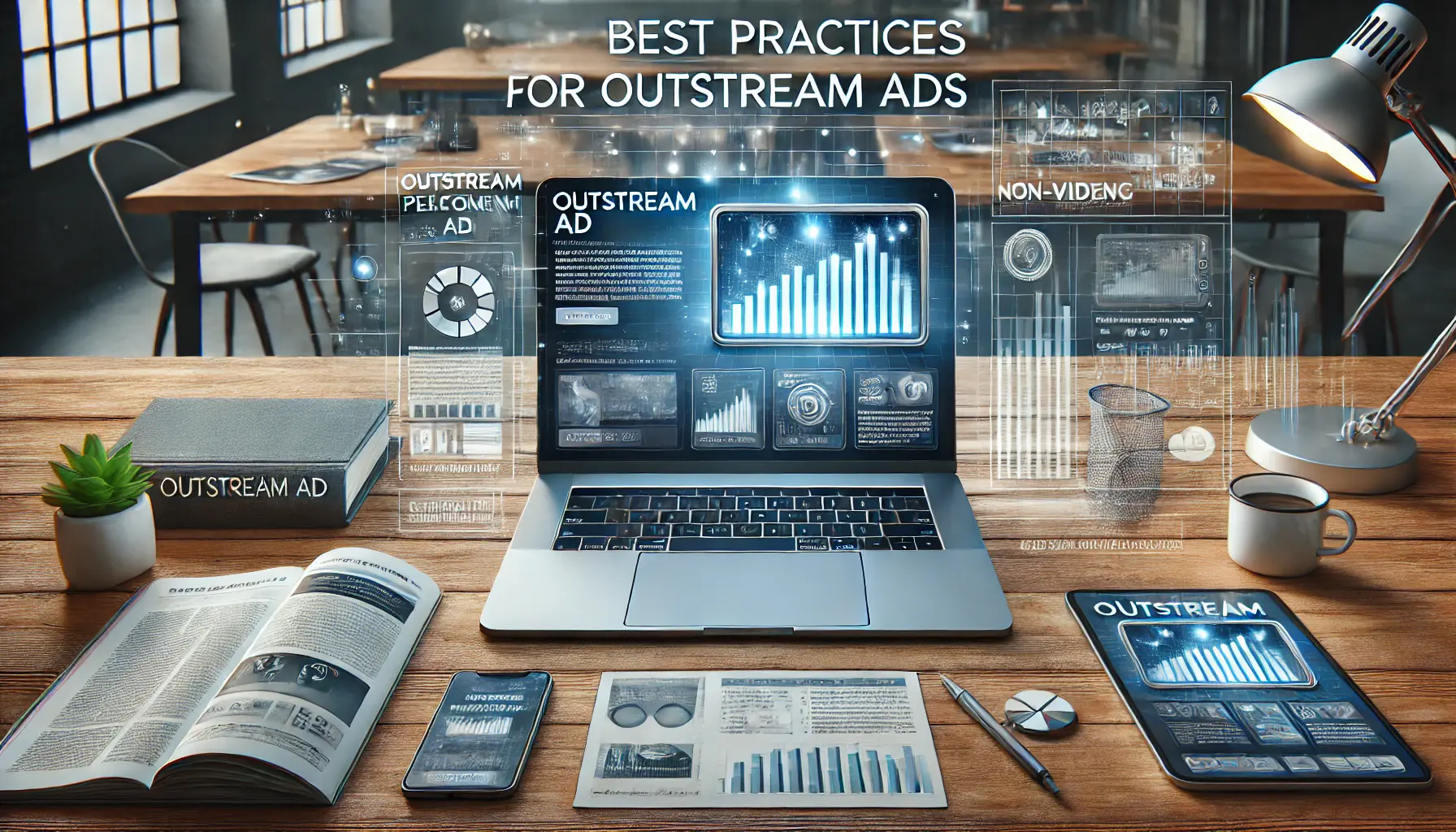
Illustration of best practices for optimizing Outstream Ads in a professional digital marketing setting.
Best Practices for Outstream Ads
To make outstream ads as effective as possible, consider the following strategies:
- Optimize for mobile: Ensure ads are mobile-friendly, as most users access content through smartphones and tablets.
- Use appealing visuals: Capture attention quickly with eye-catching visuals, especially since these ads play without sound initially.
- Clearly include calls-to-action: Direct viewers on the next steps, such as visiting your website or learning more about your product or service.
- Align with relevant content: Position ads within content that resonates with your target audience to increase relevance and engagement.
Outstream ads provide a valuable avenue for advertisers to extend their reach beyond traditional video platforms, engaging users within the content they are already consuming.
By implementing these best practices, brands can effectively use this format to enhance visibility and drive meaningful engagement.
Outstream Ads reach audiences beyond YouTube, enhancing engagement within other content formats.
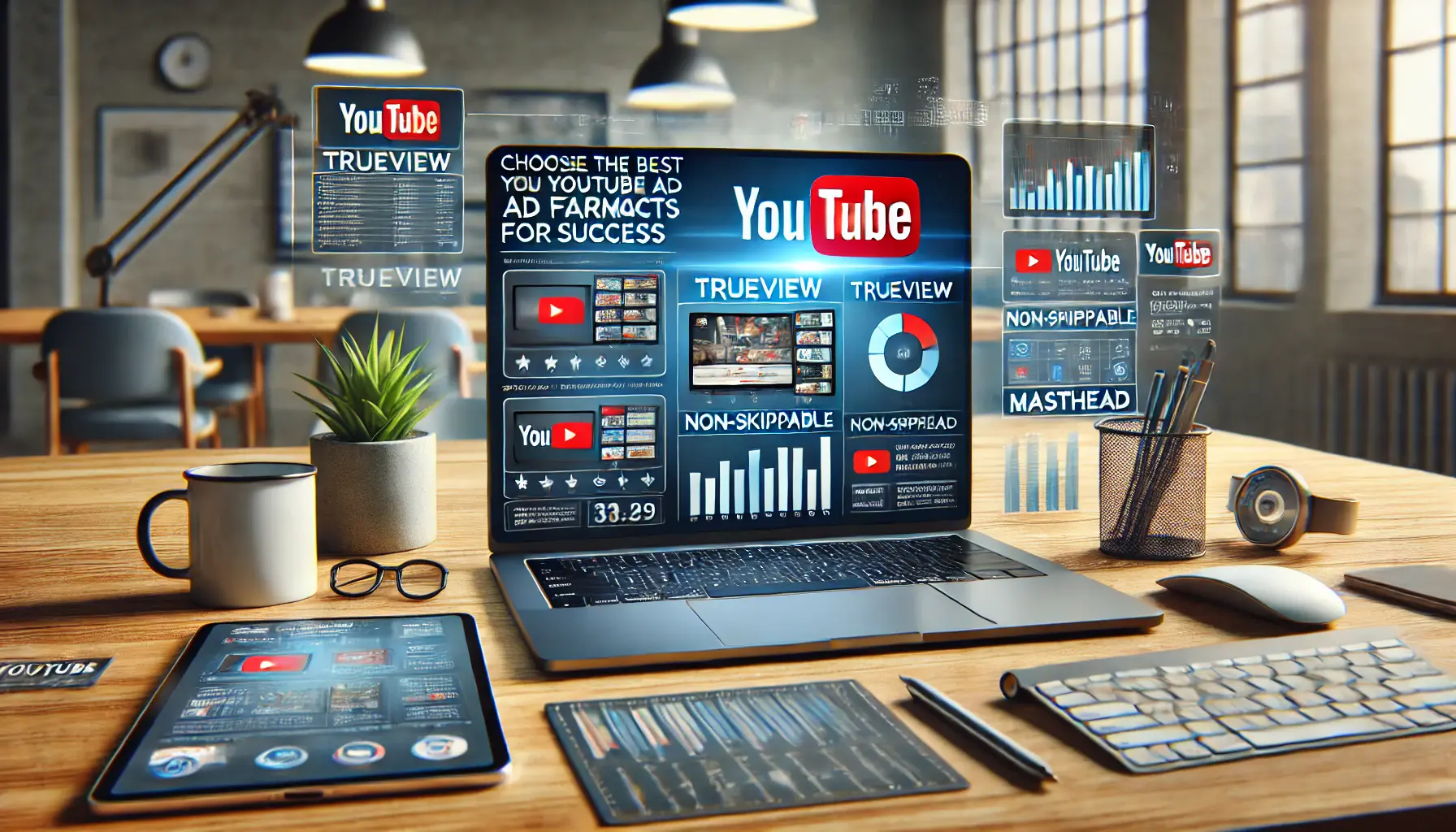
Illustration of choosing the best YouTube ad formats for success in a professional digital marketing environment.
Conclusion: Choosing the Best YouTube Ad Formats for Success
Picking the best format for YouTube ad success requires a deep understanding of the various ad formats.
For any brand or marketer aiming to make a worthwhile impact on the powerhouse that is YouTube, mastering these formats is essential.
Each format offers unique benefits and serves specific purposes, allowing advertisers to tailor their campaigns based on goals, audience preferences, and engagement levels.
By selecting the right formats and implementing best practices, brands can boost visibility, drive engagement, and achieve their marketing objectives on YouTube and beyond.
Summary of YouTube Ad Formats
Each of the dominant YouTube ad formats discussed in this article provides distinct ways to engage audiences:
- TrueView Ads: Empower viewers with control and are highly cost-effective, as payment is required only for engaged views.
- Non-Skippable Ads: Deliver the full message to viewers, who must watch the entire ad. Ideal for short, high-impact content.
- Bumper Ads: Provide quick, memorable branding opportunities in just six seconds. Perfect for mobile users and reinforcing brand recall.
- Masthead Ads: Place your brand prominently on the YouTube homepage, reaching enormous audiences during key events and product launches.
- Outstream Ads: Extend your reach beyond YouTube, allowing viewers to engage with ads within text-based content across various websites and apps.
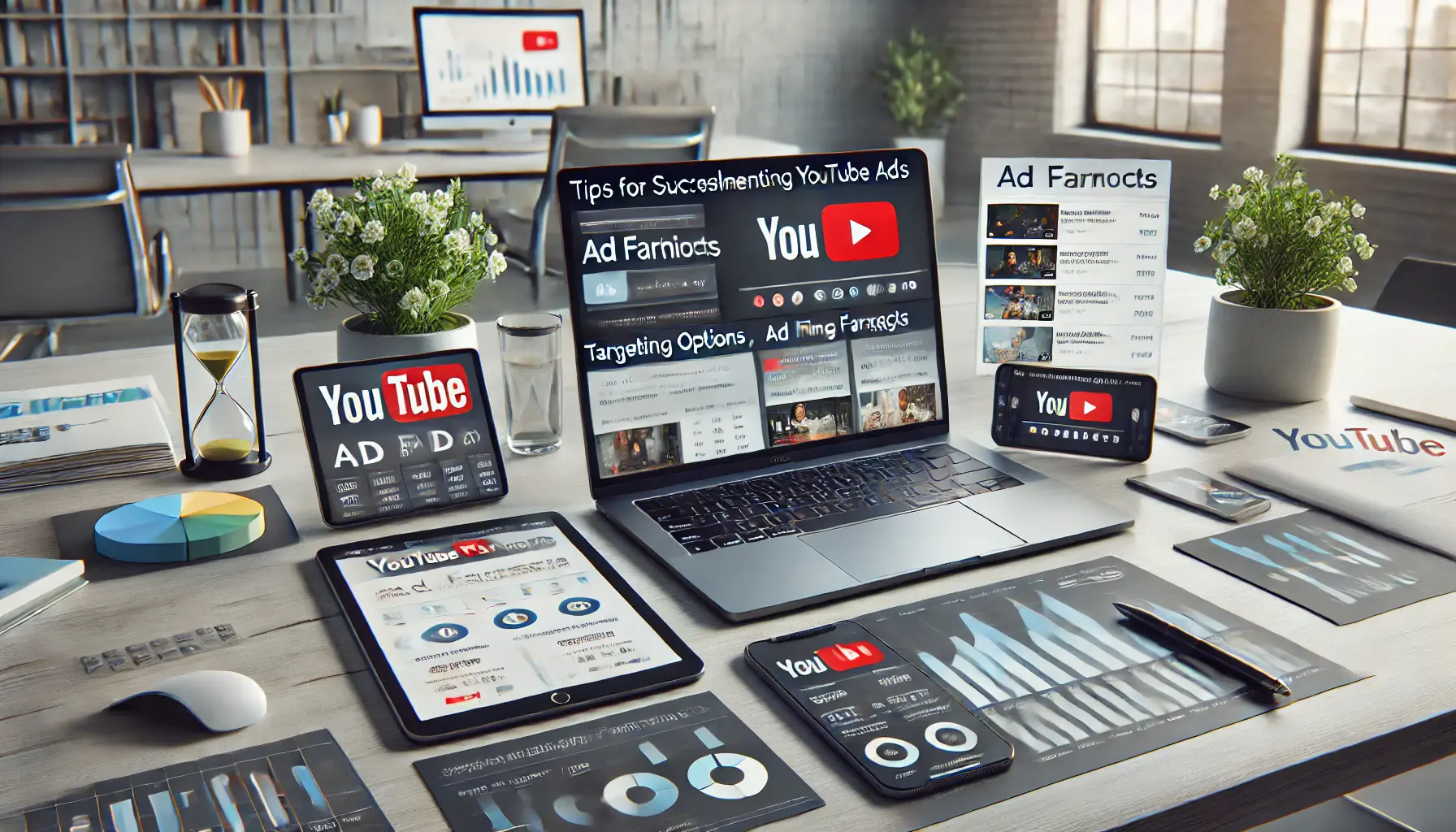
Illustration of YouTube ad campaign strategies and tips in a professional digital marketing environment.
Tips for Successfully Implementing YouTube Ad Formats
To achieve the best results, ensure your ad format aligns with your campaign objectives.
Consider these tips for selecting and implementing the most effective YouTube ad formats:
- Define your objectives: Clarify whether your focus is on awareness, engagement, or conversions, and choose the format that best suits your goals.
- Understand your audience: Select ad formats that cater to your audience’s preferences, platform behaviors, and device usage patterns.
- Prioritize high-quality visuals: Use eye-catching visuals and concise messaging to make an immediate impact, especially for shorter ad formats.
- Include clear calls-to-action: Clearly guide viewers on what to do next, whether it’s visiting your site, subscribing, or exploring more content.

Illustration of the future of YouTube ad success, with advanced analytics and trends in a professional marketing setting.
The Future of YouTube Ad Success
Future success in YouTube advertising will depend on staying updated with new ad formats and evolving strategies to align with changing viewer behaviors and industry trends.
By mastering these formats and adapting to new developments, advertisers can continue capturing audience attention and driving meaningful engagement in a competitive digital landscape.
Choosing the right YouTube ad format can transform a brand’s marketing efforts, achieving the perfect blend of visibility, reach, and impact.
Whether you aim to boost brand awareness, promote a product, or reconnect with past customers, selecting the right format can help deliver the desired results.
Use these ad formats thoughtfully to elevate your brand presence and build long-lasting relationships with your audience.
Each ad format offers unique benefits. Choosing the right one based on campaign objectives can maximize success.
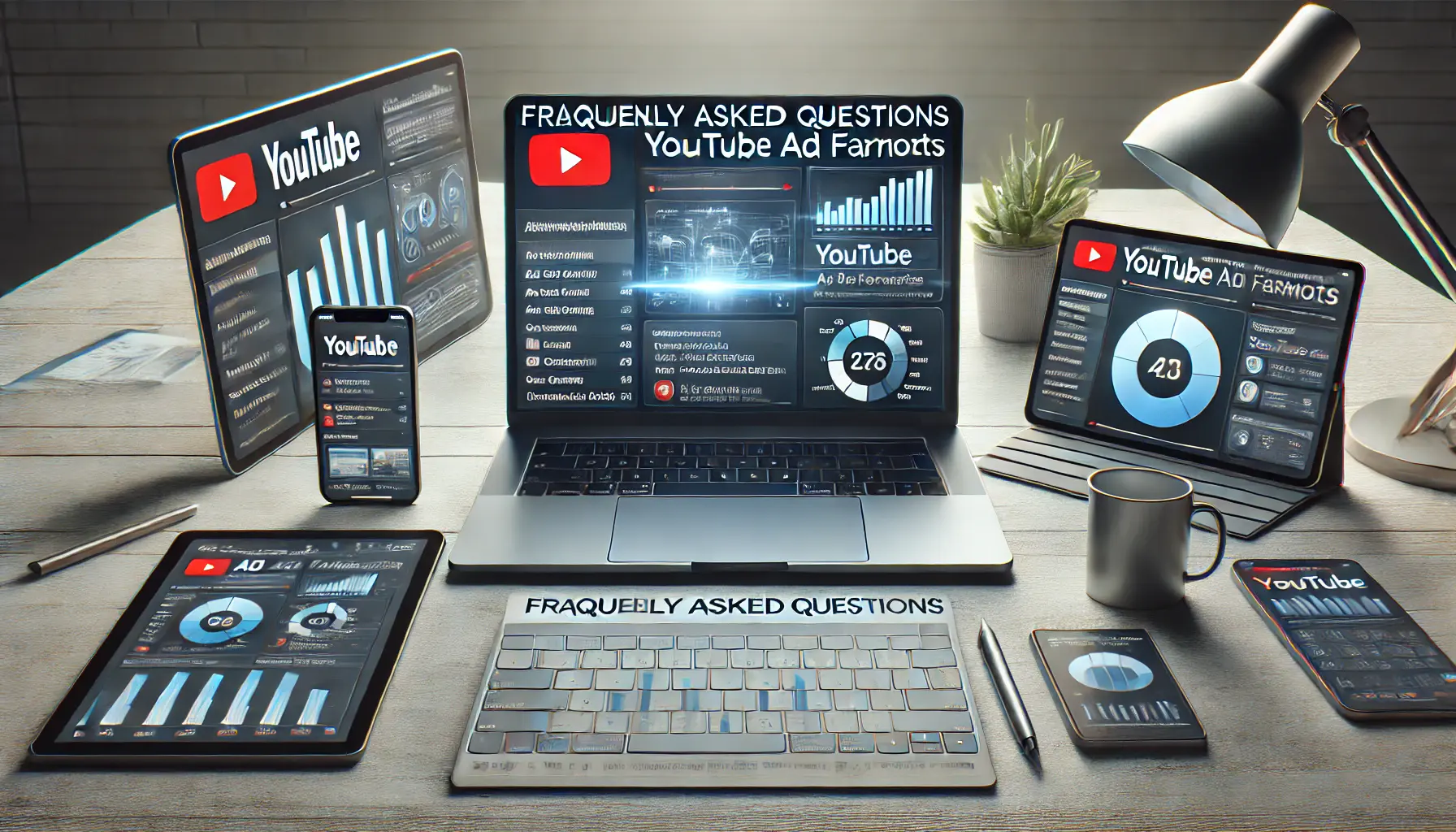
Illustration of a professional digital marketing workspace addressing common questions about YouTube ad formats.
Your campaigns can be managed by an agency specialized in Google Ads, check out our service page.
Frequently Asked Questions About YouTube Ad Formats
Understanding YouTube ad formats is crucial for effective digital marketing.
Below are common questions and concise answers to help you navigate this landscape.
The major YouTube ad formats are Skippable In-Stream Ads, Non-Skippable In-Stream Ads, In-Feed Video Ads, Bumper Ads, Masthead Ads, and Outstream Ads.
Skippable In-Stream Ads run before, during, or after videos and allow viewers to skip the ad after 5 seconds.
Advertisers are only charged when viewers watch 30 seconds or engage with the ad.
Non-Skippable In-Stream Ads are typically 15 to 20 seconds long, depending on regional standards, and must be watched in full before the main video content.
In-Feed Video Ads appear alongside related YouTube videos, in YouTube search results, or on the YouTube mobile homepage, inviting viewers to click and watch.
Bumper Ads are 6-second non-skippable video ads ideal for bite-sized, frequent messages to increase brand awareness and reach a broad audience.
Choose an ad format based on your campaign objectives, target audience, and desired engagement level.
Ensure the ad format aligns with your marketing goals for optimal results.
Yes, YouTube ads can be tailored to fit various budgets and targeting options, making them effective for helping small businesses reach targeted audiences.
Use YouTube Analytics to track metrics such as views, click-through rates, and conversions.
Analyzing these metrics aids in refining strategies and assessing ad performance.
Yes, YouTube offers targeting options based on demographics, interests, and behaviors, making ad serving highly effective.
